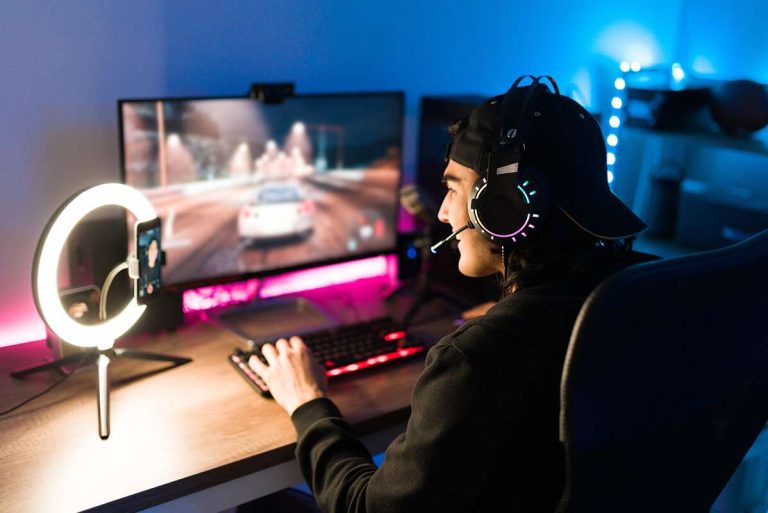When it comes to sharing your gaming adventures with the world, capturing and streaming from your gaming PC requires the right hardware and software setup. By utilizing tools like capture cards and streaming software such as OBS, you can easily showcase your gameplay to an audience. In this guide, I will walk you through the necessary steps to set up and configure OBS for streaming, ensuring a smooth and high-quality streaming experience. Let’s dive in!
Hardware Requirements for Capturing and Streaming
Capture card and high-quality microphone
To begin capturing and streaming your gameplay, you will need essential hardware. A capture card is a crucial component that allows you to record and stream your gaming content from your PC to platforms like Twitch or YouTube. Additionally, a high-quality microphone is necessary to provide clear commentary and engage with your audience effectively.
Software for Capturing and Streaming
OBS (Open Broadcaster Software)
One of the most popular and feature-rich software for capturing and streaming is OBS (Open Broadcaster Software). OBS offers a range of tools and settings to customize your stream, such as scene transitions, overlays, and audio mixing options. It is user-friendly and highly customizable, making it a preferred choice among gamers and content creators.
Setting Up OBS for Streaming
Selecting sources and adjusting settings
Once you have installed OBS, the next step is to set it up for streaming. Start by adding your video and audio sources, such as your game window and microphone. Adjust the settings according to your preferences, including resolution, frame rate, and audio levels. Create different scenes for a polished stream layout with transitions and overlays.
Configuring Stream Settings in OBS
Bitrate and resolution settings
Configuring stream settings in OBS is crucial to ensure a smooth streaming experience. Set the bitrate based on your internet upload speed to avoid buffering issues. Adjust the resolution and frame rate to match your PC’s capabilities and the platform’s requirements. Testing different settings and monitoring performance can help optimize your stream quality.
Starting the Stream from Your Gaming PC
Initiating stream and monitoring performance
Once you have configured OBS settings, it’s time to start your stream from your gaming PC. Click the “Start Streaming” button in OBS to go live on your preferred platform. Monitor performance metrics like CPU usage, dropped frames, and stream quality to ensure a stable and high-quality broadcast. Engage with your audience and have fun sharing your gaming experience!
Conclusion
In conclusion, capturing and streaming from your gaming PC involves a combination of hardware and software tools. By using a capture card, a high-quality microphone, and software like OBS, you can share your gameplay with the world seamlessly. Customizing OBS settings, configuring stream options, and monitoring performance are key steps to providing an engaging and high-quality streaming experience. Get ready to showcase your gaming skills and connect with your audience through live streaming!
Frequently Asked Questions
Can I stream from my gaming PC without a capture card?
Yes, you can stream from your gaming PC without a capture card by using software solutions that allow for screen capture or game capture. However, a capture card is recommended for higher quality and less strain on your PC.
What bitrate should I use for streaming on OBS?
The recommended bitrate for streaming on OBS varies depending on your resolution and platform requirements. Generally, a bitrate of 2500-6000 kbps is suitable for 720p streaming, while 4500-9000 kbps is recommended for 1080p streaming.
How can I improve the audio quality of my stream?
To improve the audio quality of your stream, invest in a high-quality microphone and set up filters in OBS to reduce background noise and enhance voice clarity. Testing your audio levels and adjusting settings can also help optimize the sound output.
What are the best practices for engaging with viewers during a stream?
Engaging with viewers during a stream is essential for building a community and keeping viewers entertained. Respond to chat messages, ask for feedback, involve viewers in gameplay decisions, and create interactive elements like polls or giveaways to increase viewer participation.
How do I troubleshoot common streaming issues in OBS?
If you encounter common streaming issues in OBS, such as dropped frames, audio desync, or laggy gameplay, try adjusting your bitrate, changing server locations, updating your drivers, or reducing the number of active sources in your scene. Monitoring performance metrics and testing different settings can help identify and resolve streaming issues effectively.
